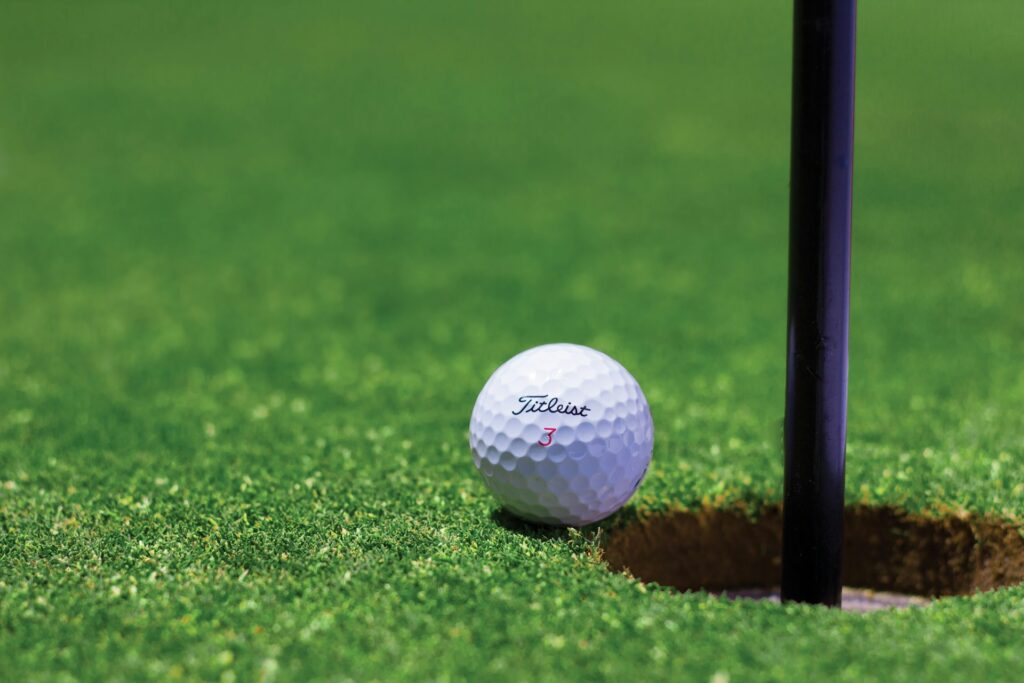
Golf balls may seem like simple spherical objects, but their construction is a marvel of engineering and materials science. Behind that dimpled exterior lies a meticulously designed and layered composition that governs every aspect of a golf ball’s performance, from launch characteristics and ball flight to spin rates and feel. Understanding the intricate details of what golf balls are made of—the core materials, cover compositions, and dimple patterns—is crucial for golfers seeking to optimize their game and for manufacturers aiming to push the boundaries of ball technology.
In this comprehensive guide, we’ll unravel the secrets of golf ball construction, exploring the role of each component, the evolution of ball design over time, and the innovative approaches different brands take to cater to diverse player needs and preferences.
What Materials Comprise the Core of a Golf Ball?
The core is the innermost component of a golf ball, responsible for providing much of its weight and initial velocity off the clubface. Traditionally, golf ball cores were made of a synthetic rubber material called polybutadiene. However, modern golf ball manufacturers have explored various core compositions to achieve different performance characteristics.
One common core material is a highly cross-linked rubber compound, which provides a solid, resilient core for enhanced distance and low spin rates off the driver. These rubber cores can be single, dual, or multi-layered, with each layer offering varying degrees of compression and resilience.
Another popular core material is a highly neutralized ionomer, a type of thermoplastic polymer that offers excellent resilience and durability. These ionomer cores can be found in both two-piece and multi-layer golf ball constructions, and they are often combined with other materials, such as polybutadiene rubber or metal powders, to achieve specific performance characteristics.
Some golf ball manufacturers have also experimented with liquid or semi-solid core materials, which can provide a unique feel and spin characteristics. These cores may consist of a variety of materials, including liquids, gels, or pastes, encapsulated within a thin, resilient shell.
Additionally, manufacturers may incorporate Dense compounds, such as tungsten or other heavy metals, into the core to increase the ball’s overall weight and moment of inertia, which can benefit players with slower swing speeds by reducing spin rates and promoting higher launch angles.
The core’s size, compression, and material composition play a crucial role in determining a golf ball’s overall performance characteristics, including distance, spin rates, and feel. By carefully engineering the core’s materials and construction, manufacturers can create golf balls tailored to various player preferences and swing characteristics.
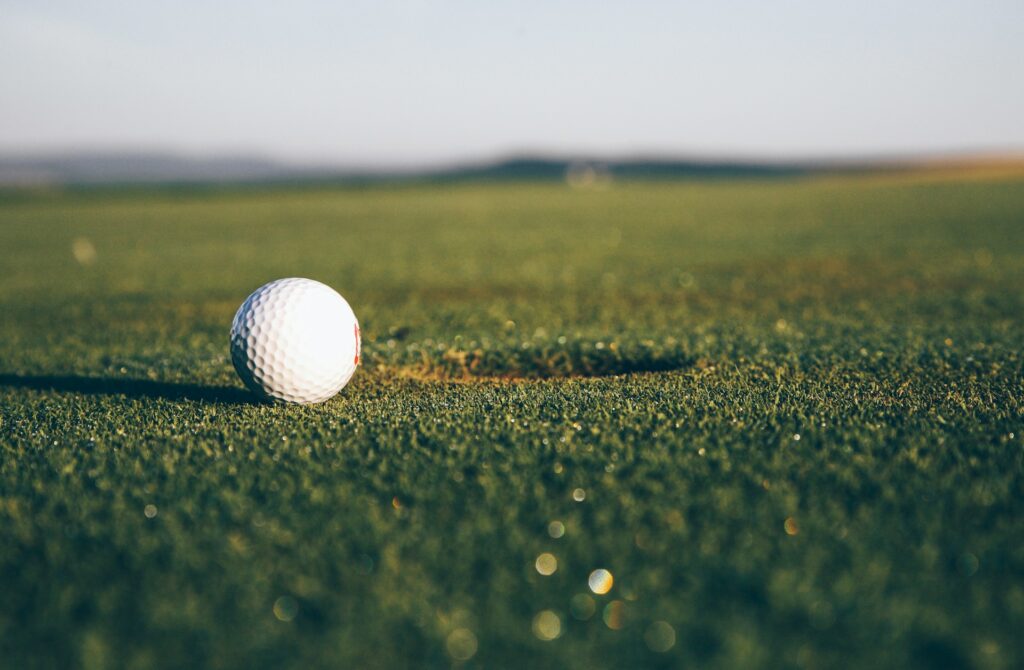
How Does the Cover Layer Contribute to a Golf Ball’s Performance?
The cover layer of a golf ball plays a vital role in its overall performance, affecting factors such as spin, trajectory, and durability.
Spin Control:
The cover material and its construction significantly influence the ball’s spin rates, particularly on shorter shots like approach shots and chips. Softer cover materials, like urethane or ionomer blends, allow for more friction between the clubface and ball, resulting in increased spin rates. This extra spin can provide better control and workability around the greens, enabling skilled players to shape their shots more effectively.
Trajectory and Launch Conditions:
The cover’s firmness and composition impact the ball’s launch conditions, including launch angle and ball speed. Harder covers generally produce higher launch angles and lower spin rates off the driver, promoting a more penetrating ball flight. Conversely, softer covers can generate a higher spin rate off the tee, leading to a higher trajectory with more carry distance.
Feel and Sound:
The cover material significantly influences the feel and sound of a golf ball at impact. Softer cover materials, such as urethane or cast urethanes, provide a softer, more responsive feel, which many golfers prefer, particularly on shorter shots. Harder covers, like ionomer blends, tend to have a firmer, more solid feel and produce a higher-pitched sound at impact.
Durability and Shear Resistance:
The cover’s material composition also affects its durability and resistance to shearing forces. Covers made from harder materials, like ionomer blends or thermoplastic urethanes, are generally more durable and resistant to cutting or scuffing from clubface impacts or course hazards. Softer covers, while providing excellent feel, may be more susceptible to premature wear and tear.
Aerodynamics:
The cover’s dimple pattern and surface texture can influence the ball’s aerodynamic performance. Manufacturers carefully design dimple patterns and cover textures to optimize lift and drag forces, affecting the ball’s trajectory and distance potential.
By carefully selecting and engineering the cover material, hardness, and construction, golf ball manufacturers can fine-tune a ball’s performance characteristics to suit various player preferences and skill levels. The cover layer is a critical component in achieving the desired spin rates, launch conditions, feel, durability, and aerodynamic properties that golfers demand.
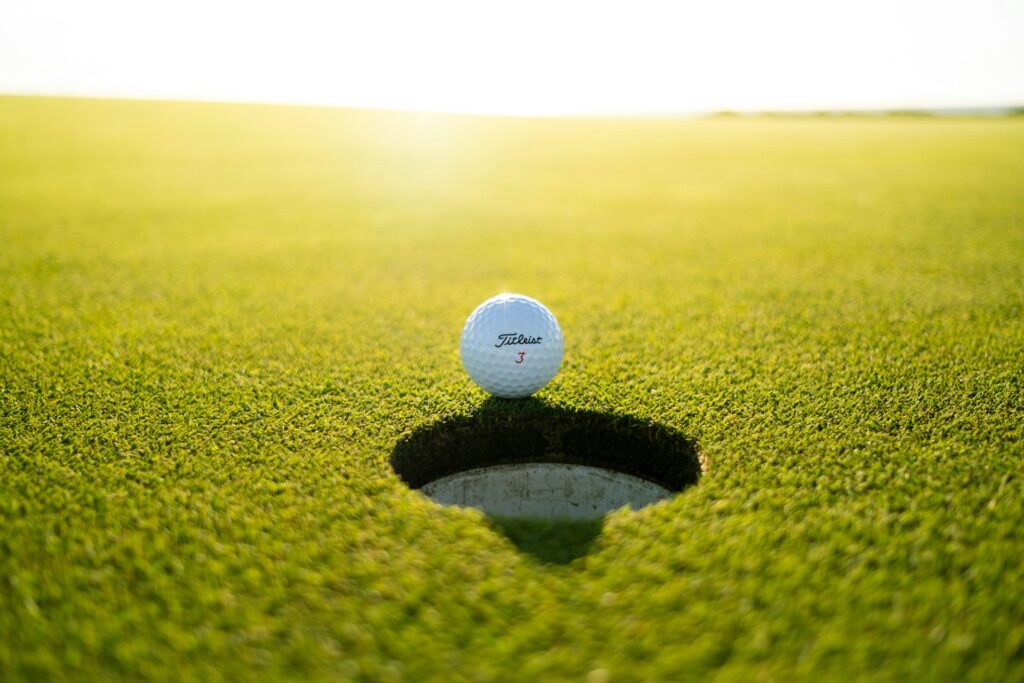
What Role Do Dimples Play in a Golf Ball’s Aerodynamics?
Dimples play a crucial role in a golf ball’s aerodynamics, significantly impacting its flight trajectory, distance, and overall performance.
Golf balls are not perfectly smooth; instead, they are covered in hundreds of precisely designed dimples. These small indentations may seem insignificant, but they are instrumental in creating the aerodynamic forces that govern a golf ball’s flight. Dimples disrupt the airflow around the ball, creating a thin turbulent boundary layer that clings to the surface. This turbulent boundary layer reduces drag forces and allows the ball to travel farther than it would with a smooth surface.
The number, size, depth, and pattern of dimples on a golf ball are carefully engineered to optimize its aerodynamic performance. Typically, modern golf balls feature between 300 and 500 dimples, with each dimple measuring a few millimeters in diameter and depth. The precise arrangement of these dimples is the result of extensive research and testing by golf ball manufacturers, as different dimple patterns can significantly affect the ball’s flight characteristics.
Dimples create a thin turbulent boundary layer that helps the ball cut through the air more efficiently. Without dimples, the smooth surface of the ball would cause the airflow to separate early, creating a large wake of turbulent air behind the ball. This turbulence would increase drag forces and limit the ball’s distance potential. However, with dimples, the turbulent boundary layer remains attached to the ball’s surface for a longer period, reducing drag and allowing the ball to travel farther.
In addition to reducing drag, dimples also contribute to a golf ball’s lift forces. As the ball spins during flight, the dimples create an asymmetric pressure distribution around the ball, generating lift forces that can influence its trajectory. The specific dimple pattern and spin rates can cause the ball to curve or draw in different directions, allowing skilled players to shape their shots intentionally.
Golf ball manufacturers constantly research and develop new dimple patterns and designs to optimize aerodynamic performance further. Advanced computational fluid dynamics (CFD) simulations and wind tunnel testing are used to analyze and refine dimple designs, ensuring that each new golf ball model offers improved distance, trajectory control, and overall performance compared to its predecessors.
By understanding the vital role dimples play in a golf ball’s aerodynamics, manufacturers can continue to push the boundaries of golf ball technology, delivering products that meet the ever-increasing demands of professional and amateur golfers alike.
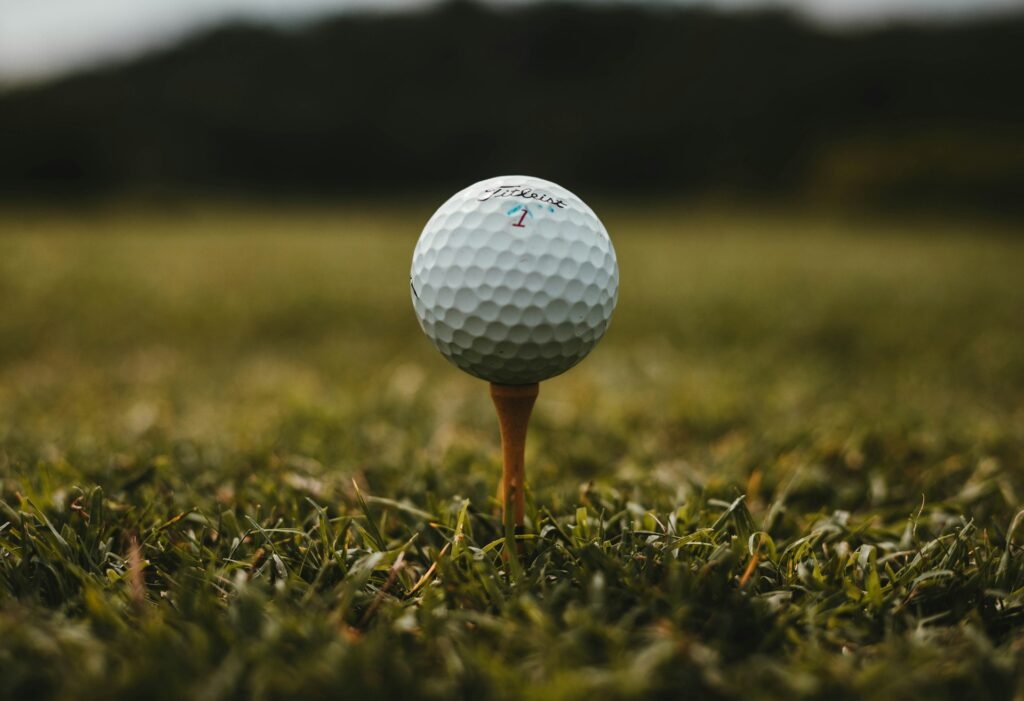
How Has the Construction of Golf Balls Evolved Over Time?
The construction of golf balls has undergone significant evolution over time, driven by advancements in materials science, manufacturing techniques, and a deeper understanding of ball flight physics.
Early Beginnings (14th-19th Century):
Golf balls in the early days were made from untreated natural materials like wood and feathers. The feathery ball, also known as the “featherie,” consisted of a leather pouch stuffed with goose or chicken feathers. These balls were handmade, inconsistent in quality, and had a relatively short lifespan.
The Gutta-Percha Era (Mid-19th Century):
In 1848, the Rev. Dr. Robert Adams Paterson introduced the gutta-percha ball, made from the latex of the Gutta-percha tree. These balls were more durable, consistent, and could be mass-produced, revolutionizing the game of golf. However, their performance was still limited, and they tended to become irregular in shape after extended use.
The Rubber Core (Late 19th Century):
In the late 19th century, coated rubber cores replaced the solid gutta-percha balls. These rubber-cored balls, known as “Haskells,” featured a rubber thread wound around a solid rubber core and were then covered with a thin gutta-percha layer. This construction provided improved distance and consistency compared to the earlier solid gutta-percha balls.
The Wound Balata Ball (Early 20th Century):
In the early 1900s, the wound balata ball became popular. These balls featured a liquid or solid rubber core wrapped in rubber thread and covered with a soft balata (trans-polyisoprene) material. The wound construction and balata cover provided a softer feel and increased spin rates, allowing for more control on approach shots.
The Two-Piece Solid Ball (Mid-20th Century):
In the 1960s, the two-piece solid ball emerged, consisting of a solid rubber or synthetic rubber core encased in a tough, cut-proof ionomer resin cover. These balls were more durable, consistent, and offered longer distance compared to the wound balata balls, but lacked the spin and control of their predecessors.
The Multi-Layer Ball (Late 20th Century):
In the 1990s, multi-layer balls were introduced, featuring a solid or liquid core surrounded by multiple layers of various materials, including ionomer resins, urethanes, and other proprietary blends. This construction allowed manufacturers to fine-tune ball characteristics like spin, launch angle, and feel for different swing speeds and player preferences.
Modern Advancements (21st Century):
Today’s golf balls are highly engineered products, incorporating cutting-edge materials like thermoplastic urethanes, nanotechnology, and advanced dimple patterns. Manufacturers continue to push the boundaries of ball construction, exploring new core and cover materials, multi-layer designs, and aerodynamic technologies to optimize performance for different playing conditions and skill levels.
The evolution of golf ball construction has been a continuous journey, driven by the pursuit of improved performance, consistency, and playability. As materials science and manufacturing techniques continue to advance, golf ball design will likely continue to evolve, offering players of all levels an ever-improving playing experience.
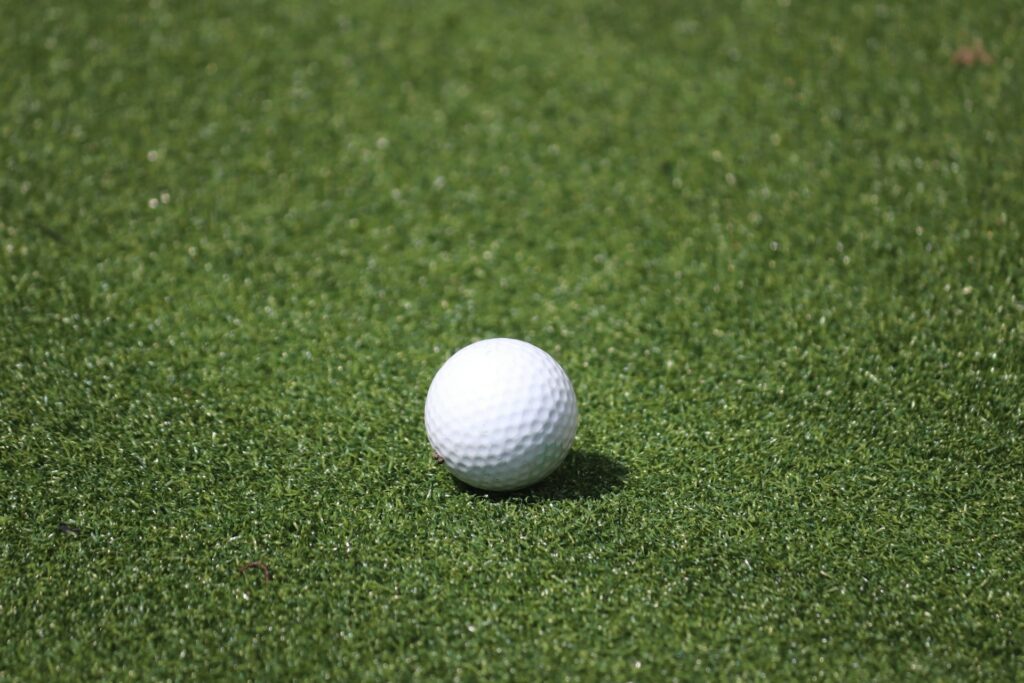
Are There Differences in Golf Ball Composition Across Manufacturers?
Yes, there are significant differences in golf ball composition across various manufacturers, as each company employs proprietary materials, construction methods, and design philosophies to differentiate their products and cater to specific player preferences.
Core Materials and Construction:
- Titleist utilizes a proprietary NDX hybrid core material that combines a solid rubber center with a soft outer region for low spin and high speed off the driver.
- Callaway’s Dual SoftFast core features a soft inner core and a firm outer core for increased ball speed and low spin on full shots.
- TaylorMade employs a five-layer construction with a cast urethane outer cover and a high-velocity rubber core for enhanced distance and low spin.
- Bridgestone uses a gradational compression core with varying firmness levels from the center to the outer core for optimized energy transfer and spin control.
Cover Materials and Properties:
- Titleist’s Pro V1 and Pro V1x models feature a thermoset cast urethane cover renowned for its soft feel, greenside spin, and durability.
- Callaway’s Chrome Soft and Chrome Soft X lines utilize a proprietary SoftFast core and a thin, soft urethane cover for increased ball speed and more spin on shorter shots.
- TaylorMade’s TP5 and TP5x balls feature a Tour-proven cast urethane cover designed for exceptional greenside control and durability.
- Srixon’s Z-Star and Z-Star XV models employ a highly resilient and durable ionomer cover blended with urethane for a unique combination of distance and spin performance.
Dimple Patterns and Aerodynamics:
- Titleist utilizes a spherically-tiled 388 dimple pattern on its Pro V1 line for optimized aerodynamics and consistent ball flight.
- Callaway’s Triple Track Technology features three lines of contrast-colored dimples designed to improve visual perception and promote straighter ball flights.
- TaylorMade’s Pix optical dimple pattern is engineered to reduce drag and enhance lift for increased carry distance and optimized trajectory.
- Bridgestone’s Dual Dimple technology combines two different dimple sizes to create a more penetrating ball flight with reduced drag and increased carry.
Performance Characteristics:
- Titleist golf balls are renowned for their consistent flight, greenside spin, and overall performance across a wide range of swing speeds.
- Callaway’s offerings often prioritize maximum ball speed and distance potential for players with moderate to higher swing speeds.
- TaylorMade’s ball designs focus on delivering a combination of distance, high launch, and controlled spin for various player types.
- Bridgestone’s golf balls are known for their exceptional greenside spin and soft feel, particularly appealing to better players and those seeking more shot-making control.
While these are just a few examples, each golf ball manufacturer invests significant resources into researching and developing unique core, cover, and dimple designs to differentiate their products and cater to the diverse needs and preferences of golfers across various skill levels and swing characteristics.
Enjoyed this guide of what are golf balls made of? Then be sure to check out our other golf guides.
- Best Insoles for Golf Shoes
- Best Golf Cart Phone Holders
- Best Golf Tripods
- Best Knee Braces for Golf
- Best Golf Balls for Seniors
- Best Golf Cart Batteries
- Best Cooling Fans for Golf Cart
- Best Golf Cart Covers
- Best Golf Shoes for Plantar Fasciitis
- Best Coolers for Golf Cart
- Best Golf Balls for Beginners